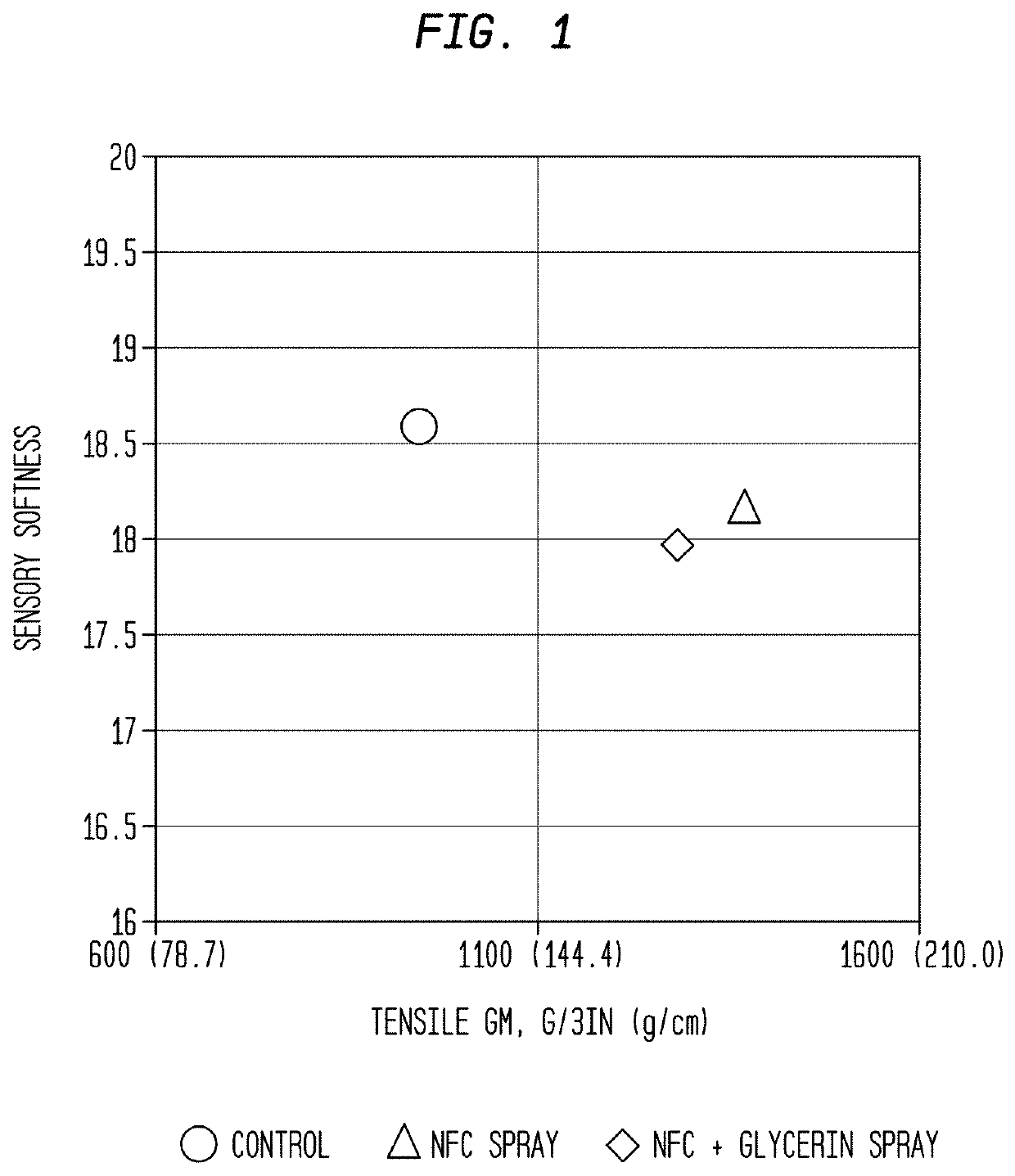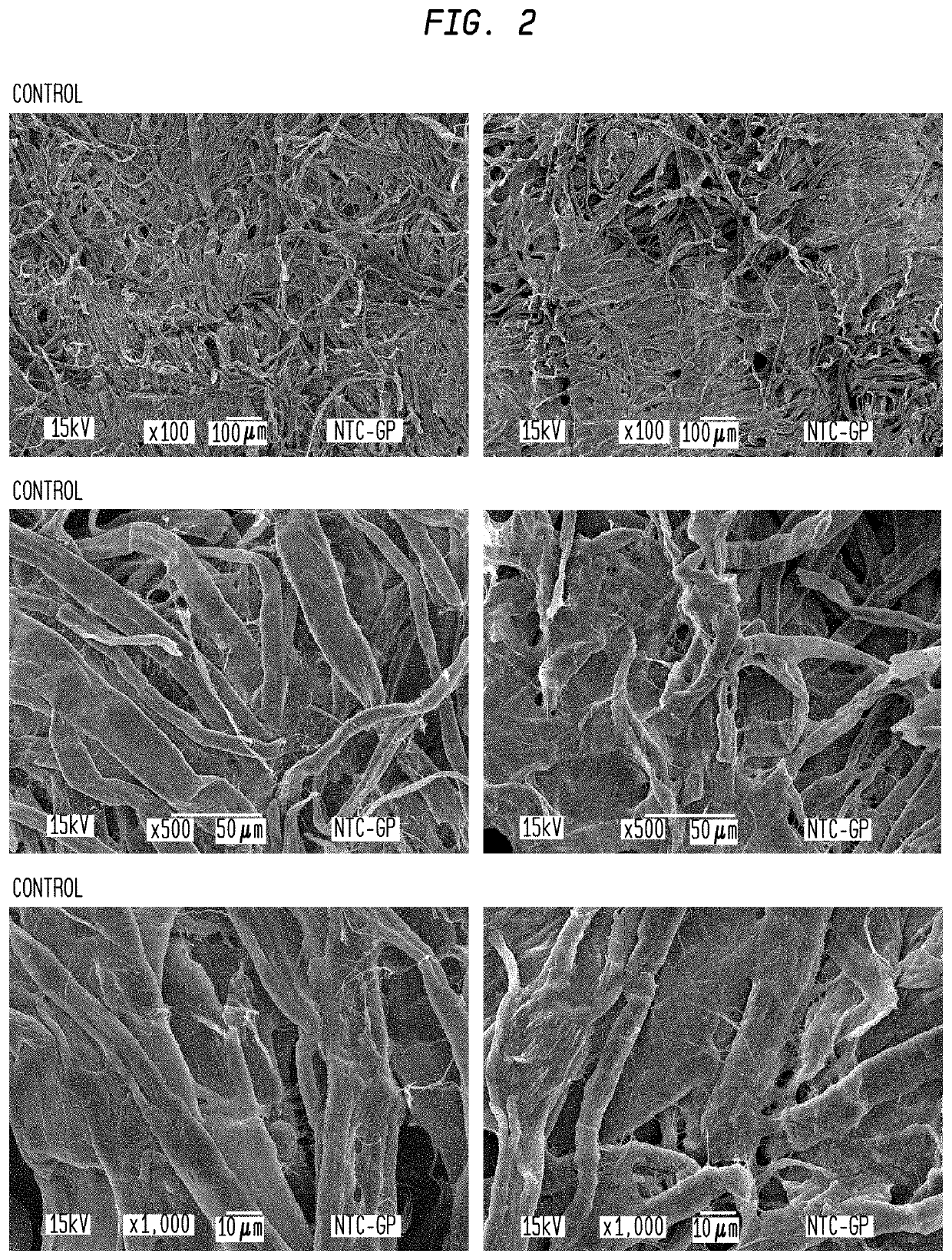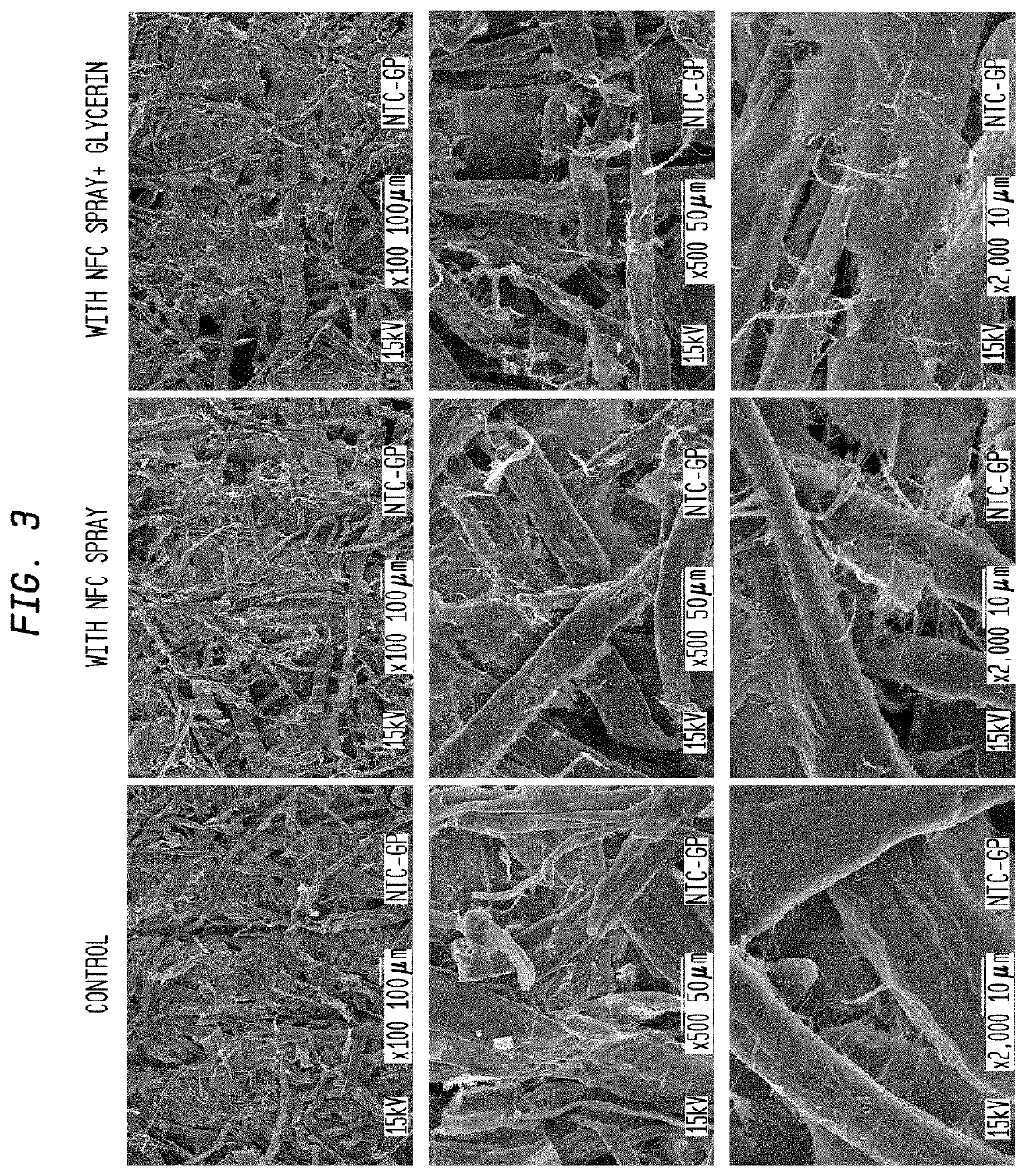Tissue with nanofibrillar cellulose surface layer
a surface layer and tissue technology, applied in the field of absorbent paper tissue, can solve the problems of difficult to deliver soft, yet strong tissue products, difficult processing, and difficulty in increasing softness, and achieve the effect of high surface area and high aspect ratio
- Summary
- Abstract
- Description
- Claims
- Application Information
AI Technical Summary
Benefits of technology
Problems solved by technology
Method used
Image
Examples
examples
[0046]Nanofibrillar cellulose was sprayed on the Yankee surface of tissue basesheets to an approximate coat weight of 1.5 g / m2 using a manual spray bottle. The concentration (consistency) of the aqueous NFC suspensions was 2 wt % and 1 wt %. Scanning electron microscopy (SEM) images of the basesheet surface after applying the microfibrillar cellulose from 1 wt % suspension to an approximate coat weight of 1.5 g / m2 are shown in FIG. 2. In FIG. 2, the left column has SEM images of the surface of control sample (without microfibrillar cellulose) and the right column has SEM images of surface of basesheet samples after spraying microfibrillar cellulose. It can be seen from the images that the microfibrillar cellulose binds well to the surface of the basesheet fibers and the microfibrillar cellulose forms a uniform film on the surface of the tissue basesheet.
Paper Machine Trials
[0047]Utilizing a papermachine of the general class described below in connection with FIG. 4, an NFC suspensio...
PUM
| Property | Measurement | Unit |
|---|---|---|
| Breaking Length | aaaaa | aaaaa |
| widths | aaaaa | aaaaa |
| length | aaaaa | aaaaa |
Abstract
Description
Claims
Application Information
 Login to View More
Login to View More - R&D
- Intellectual Property
- Life Sciences
- Materials
- Tech Scout
- Unparalleled Data Quality
- Higher Quality Content
- 60% Fewer Hallucinations
Browse by: Latest US Patents, China's latest patents, Technical Efficacy Thesaurus, Application Domain, Technology Topic, Popular Technical Reports.
© 2025 PatSnap. All rights reserved.Legal|Privacy policy|Modern Slavery Act Transparency Statement|Sitemap|About US| Contact US: help@patsnap.com



